The Zionist Project
“Were I to sum up the Basel Congress in a word…it would be this: ‘At Basel, I founded the Jewish State. If I said this out loud today [1897] I would be answered by universal laughter. If not in 5 years, then certainly in 50. Everyone will know it’ “. Theodor Herzl Diaries 1897.
Israel was established in May 1948. Herzl missed his goal by only 1 year.
"The aim of Zionism is the erection for the Jewish people of a publicly recognised, legally secured home in Palestine. Not a Jewish State". President of the 10th Zionist Congress, Basle 1911 - nearly 14 years after Herzl's declaration.
The problem with the vision of these Zionist leaders is that it comes too late in a world which has moved forward: a world of individual rights, international law and of nations, (as the Ottoman Empire was coming to an end), yearning for self determination. Exclusivity and special previliges belonged to another era.
So, let us be clear: the so-called state of Israel is a concept formed in recent history and in doubtful circumstances. World Zionism aimed at a state where world Jews would be huddled together irrespective of where those Jews were born or to which nation or state they belonged. European anti-semitism between the two world wars, gave Zionism the raison d'etre to push for the realisation of that concept of a state for the Jews. Early Zionist thoughts did not include Palestine as the first choice. This laid bare to the lie of modern Zionists that Palestine is the natural biblical home for the Jews.
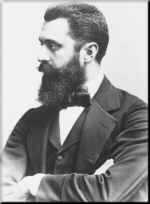 Zionism emerged as a national movement in Eastern Europe in the 1880’s. Its founder, Theodor Herzl (1860-1904), a Hungarian Jew, dreamt of establishing a Jewish State in the land of Palestine, a dream which was to be realised through colonisation and land acquisition. According to Zionist archives, the leadership of early Zionism believed that the native population of Palestine, as a result of this colonisation, would simply “fold their tents and slip away” or, if they resisted, they would be “spirited across the borders”.
Zionism emerged as a national movement in Eastern Europe in the 1880’s. Its founder, Theodor Herzl (1860-1904), a Hungarian Jew, dreamt of establishing a Jewish State in the land of Palestine, a dream which was to be realised through colonisation and land acquisition. According to Zionist archives, the leadership of early Zionism believed that the native population of Palestine, as a result of this colonisation, would simply “fold their tents and slip away” or, if they resisted, they would be “spirited across the borders”.
For the Zionists, it all started in Livorno, Italy with the birth of Moses Haim Montefiore in 1784, and who, by the age of 40, had amassed a huge fortune through trading in the City of London where he was knighted in 1837.
Sir Moses travelled to Palestine a total of six times. The first in 1827 at the age of 43 and the last in 1874 at the mature age of 90. He made acquaintance with the Pasha of Egypt in the hope that the Pasha would allow him to purchase lands in Palestine to establish the first Jewish colonies near Safad.
As early as the mid 1850s, the single aim of all Zionist planners and so-called philanthropists like Montefiore, was to slowly acquire as much land in Palesine for the sole benefit of the Jewish community and the newly arrived Jewish immigrants. Naturally, this can only be at the expense of the eventual displacement of Palestine's indigenous people.
In 1854, Sir Moses succeeded in acquiring that piece of fertile farming land near Safad, for the benefit of some 54 Jewish families. In 1870, near the Palestinian port city of Yafa, world famous for its produce of Jaffa oranges, a group of Russian Jews founded an agricultural school called Mikveh Israel on 2500 Dunums. Russian Jewish students also formed many religious groups the most famous of which was Bilu in 1882. Other similar but more powerful groups were formed calling themselves 'Hoverei Zion' (Hebrew for 'Lovers of Zion'). Their activities in Palestine were aimed at establishing new colonies such as Rishon-Le-Zion near Yafa, Zikhron Ya'acov south of Haifa and Rosh Pinnah in the Galilee.
During the late 1860's, Palestine witnessed the influx of a new type of arrivals from Germany: The Knights Templars. Their number did not exceed 200-250, but they made a name for themselves by their excellent farms and their good manners of land management. Thier first colony was Sarona founded in 1871. Like the Zionists, they modelled their settlements on their German lots back home.
In 1878, a small number of Jews left the walls of Jerusalem, and settled in the fields of Umm Lebes near Tel-Aviv where they established the well-known settlement of Petah Tikva ('The Mother of Settlements').
Montefiore was also behind the establishment of the present-day - notoriously insulated and extremely religious - community of Mea Shearim (Hebrew for 'Hundred Gates') just outside the Damascus Gate, in Jerusalem. This is a community which started with a few dozen houses and a bakery. Now it boasts over 300 houses and its bakery is the second largest in Jerusalem.
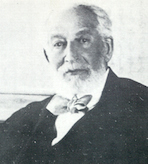 Sir Moses Montefiore (1784-1885)
Sir Moses Montefiore (1784-1885)
It was through wealthy philanthropists like Montefiore that financial mechanisms were established to funnel foreign investments into Palestine for the sole purpose of establishing Zionist communities throughout the country. For example, Montefiore established the Amsterdam Fund which preceded its sister organisation The Montefiore Testimonial Fund helping to collect money from Jews around the world. Although the early settlers were an enthusiastic bunch, they were generally unfit for the task of building their communities. It is thanks to this massive influx of funds from major Jewish philanthropists, that these early colonies managed to survive and multiply.
The network of Jewish philanthropist did not only cover Palestine, but was also active in distant continents like Argentina and aimed at establishing Jewish agricultural colonies there. A main driver of such an enterprise was a German Jewish multi-millionaire by the name of Baron Moritz von Hirsch (1831-1896) from Munich. His idea of establishing a Jewish home in Argentina was viewed with suspicion by those who favoured colonisation in Palestine. Baron von Hirsch's views were nevertheless debated at the first Zionist Congress of 1897, but ultimately rejected by the majority of the Zionist delegates.
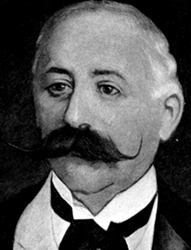 Baron Moritz von Hirsch (1831-1896)
Baron Moritz von Hirsch (1831-1896)
Other colonisation projects were considered by the Zionist leaderships in other parts of the world aimed at the creation of a Jewish Home.
For instance, Herzl had approached Joseph Chamberlain, British Colonial Secretary at the time with the idea that the Zionist should be allowed to colonise Cyprus. This was refused. Herzl then proposed Al-Arish, an Egyptian territory. This was also rejected by the British on behalf of the Egyptians. Chamberlain's sympathies for Zionist enterprises were eventually aroused, and he offered a British colony in East Africa called Uganda (present-day Kenya). Herzl was overjoyed. He presented this to his Zionist leadership suggesting that, in order to appease the leadership, this would merely be a stepping stone to the eventual colonisation of Palestine. But Herzl died, aged 44, on July 3 1904 without realising this dream.
At the 7th Zionist Congress in Basel in 1905, all other colonisation projects were dealt a mortal blow, with Palestine being the preferred bull's eye. The rest is history.
Theodor Herzl had written back in June 1895: “We shall try to spirit the penniless population across the border…and both the process of expropriation and removal of the poor must be carried out discreetly...”
Israel Zangwill (see below) followed by saying that “if we wish to give a country to a people without a country, it is utter foolishness to allow it to be the country of two peoples…”.
But years before Herzl and Zangwill made their prophetic announcements, other Jewish intellectuals laid the grounds for them. in 1862, a German Jew by the intriguing name of Moses Hess, who was inspired by French civilization, wrote "...what we have to do today, for the re-establishment of Jewish national existence, is to keep alive the hope of our political rebirth...and the founding of Jewish colonies in the ancestral land".
This concept of transfer and colonisation of the local population was held dear by almost every member of the Zionist leadership in Europe. At their first official Zionist Congress in Basel in 1897, they called already for “the establishment of a publicly and legally secured home in Palestine for the Jewish people”.
20 years later, the Balfour Declaration threw them a lifeline.
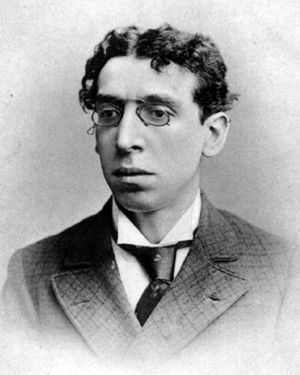 To secure support for this project, Israel Zangwill (1864-1926), an Anglo-Jewish writer born in London, and a powerful leader of British Zionism, coined the phrase: “a land without a people for a people without land”. Little did he and all his colleagues in the Zionist leadership realise (or wished to forget) that there were almost 410,000 Palestinians (Muslims and Christians) living in Palestine around the early 1890’s.
To secure support for this project, Israel Zangwill (1864-1926), an Anglo-Jewish writer born in London, and a powerful leader of British Zionism, coined the phrase: “a land without a people for a people without land”. Little did he and all his colleagues in the Zionist leadership realise (or wished to forget) that there were almost 410,000 Palestinians (Muslims and Christians) living in Palestine around the early 1890’s.
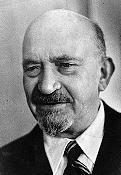 Chaim Weizmann (1874-1952), who was born in Motal near Pinsk in Belarus, and who was to become Israel’s first president, once said: “…there is a country which happens to be called Palestine, a country without a people…and there exists the Jewish people and it has no country. What is left is to fit the gem into the ring…”
Chaim Weizmann (1874-1952), who was born in Motal near Pinsk in Belarus, and who was to become Israel’s first president, once said: “…there is a country which happens to be called Palestine, a country without a people…and there exists the Jewish people and it has no country. What is left is to fit the gem into the ring…”
The Zionist leadership did not actually mean that there were no people in Palestine. They meant that there were no people in Palestine worth considering as a people. The Zionists truly believed then, and still do now, that the Land of Israel belonged exclusively to the Jewish people.
The reality began to dawn on these leaders that the only way to realise the Zionist dream in a land with no many indigenous people is to tarnsfer them out of the country.
Zionism’s idea of transfer was initially tested within a wider Arab framework where Zionist leaders would offer Arab leaders financial incentives, expertise and international influence in exchange for allowing transfers to take place and acquiescence in the expansion of the Yishuv (the Jewish community in Palestine). In January 1919, for example, Chaim Weizmann and the Hashemite Emir Faisal (1883-1933) who was aspiring to the leadership of the Arab Nationalist Movement, concluded an agreement under British auspices whereby Faisal would support Jewish immigration into Palestine in return for economic support for the future kingdom Faisal was hoping to create.
As Palestinian resistance to the expansion of the Yishuv was growing, so was the Zionist determination to implement the doctrine of separation between the Jewish community and the Palestinian population in preparation for the eventual establishment of a Jewish state.
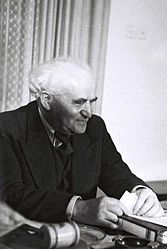 Enter David Ben-Gurion (1886-1973), one of the Yishuv leaders who was born in Poland as David Gruen and arrived in Palestine in 1906 at the age of 20 and later became the first prime minister of Israel. He strongly advanced the idea of transfer and saw a clear link between the separation of the Palestinians and of the Jews and the plan for the eventual transfer of the Palestinians out of Palestine.
Enter David Ben-Gurion (1886-1973), one of the Yishuv leaders who was born in Poland as David Gruen and arrived in Palestine in 1906 at the age of 20 and later became the first prime minister of Israel. He strongly advanced the idea of transfer and saw a clear link between the separation of the Palestinians and of the Jews and the plan for the eventual transfer of the Palestinians out of Palestine.
When the Palestinian Revolt took place between 1936 and 1939, the Zionists saw a chance for the strengthening of their underground forces and the expansion of their military infrastructure. It was becoming clear to the Yishuv that the solution to the Palestinian demographic problem can only be achieved through military force.
Ben-Gurion declared in 1936: “…What can drive the Arabs to a mutual understanding with us?…Facts, only after we manage to establish a great Jewish facts in the country will the precondition for discussion with the Arabs be met”.
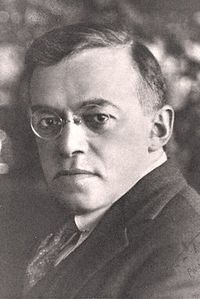 Vladimir Jabotinsky (1880-1940), born in the Ukraine-USSR, was a member of the World Zionist Organisation. He later founded the Zionist-Revisionist movement, which was the central ideological component of the Likud (which became Ariel Sharon’s Kadima party). He always believed that the creation of a Jewish state meant imposing the will of Zionism on the Palestinian population. He stated:
Vladimir Jabotinsky (1880-1940), born in the Ukraine-USSR, was a member of the World Zionist Organisation. He later founded the Zionist-Revisionist movement, which was the central ideological component of the Likud (which became Ariel Sharon’s Kadima party). He always believed that the creation of a Jewish state meant imposing the will of Zionism on the Palestinian population. He stated:
“…colonisation can continue and develop only under the protection of a force independent of the local population – an iron wall which the native population cannot break through…this is our policy towards the Arabs and to formulate it in any other way would be hypocrisy…The Jewish question can be solved either completely or it cannot be solved at all. We are in need of a territory where our people will constitute the overwhelming majority…and one must not be afraid of the word ‘segregation’ ”.
A secret document dated 18 April 1920 from the British General HQ in Cairo to the War Office in London, revealed that the riots of April 1920 in Jerusalem were incited by Jabotinsky and his clique of armed gangs who were well armed. Just before the arrival of the first British High Commissioner Herbert Samuel, an arch-Zionist and a Jew, in Palestine, Jabtinsky was arrested, tried and sentenced by the military court in Jerusalem to 15 years. But, Herbert Samuel later pardoned Jabotinsky against the advice of the War Office.
Jabotinsky believed that only ‘an iron wall of bayonets and Jewish armed garrisons’ would be able to secure Jewish sovereignty on both sides of the Jordan River. Like Weizmann and Ben-Gurion before him, he had only contempt for the indigenous Arabs. He once said: “we Jews, thank God, have nothing to do with the East. The Islamic soul must be broomed out of Eretz Yisrael”. This ideology found expression in two military terrorist organizations which became notorious for their massacres before and after the partition of Palestine in 1947:
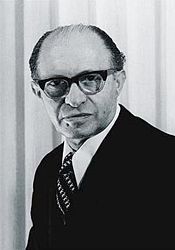 The first was the Irgun formed in 1935 by Menachem Begin (1913-1992) a Polish Jew who became prime minister in 1977 (and about whom Albert Einstein in a letter to the NY Times said that he and his party were “closely akin in their organization, methods, political philosophy and social appeal to the Nazi and Fascist parties”).
The first was the Irgun formed in 1935 by Menachem Begin (1913-1992) a Polish Jew who became prime minister in 1977 (and about whom Albert Einstein in a letter to the NY Times said that he and his party were “closely akin in their organization, methods, political philosophy and social appeal to the Nazi and Fascist parties”).
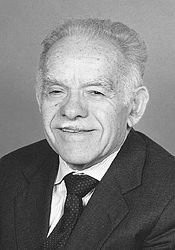 The second was the Stern Gang led by Itzhak Shamir (1915-2012) born Icchak Jaziernicki in Rozana, Poland. Stern was responsible for many terrorist acts including the assassination of Count Folke Bernadotte. Shamir, of course, became Israel’s Prime Minister not once but twice: from 1983-84 and again from 1986-1992.
The second was the Stern Gang led by Itzhak Shamir (1915-2012) born Icchak Jaziernicki in Rozana, Poland. Stern was responsible for many terrorist acts including the assassination of Count Folke Bernadotte. Shamir, of course, became Israel’s Prime Minister not once but twice: from 1983-84 and again from 1986-1992.
This Shamir described the Arabs as “beasts of the desert, not a legitimate people”. In a memorandum to UNSCOP in 1947, his Stern Gang called for the compulsory evacuation of the entire Palestinian population from Palestine, preferably in the direction of Iraq. As the sale of land by absentee landlords increased so did the bitterness of the Palestinian farmers who worked on them and who were now forced to leave by their new land owners. For this purpose, Chaim Weizmann established the Jewish Agency Executive to promote the idea of Palestinian transfer from newly acquired land. At the same time, Jewish immigration increased and the number of Jewish immigrants jumped from 30,000 in 1933 to 61,000 in 1935 (representing 29.5% of the total population).
"The aim of Zionism in the erection for the Jewish people of a publicly recognised, legally secured home in Palestine. Not a Jewish State". President of the 10th Zionist Congress, Basle 1911.